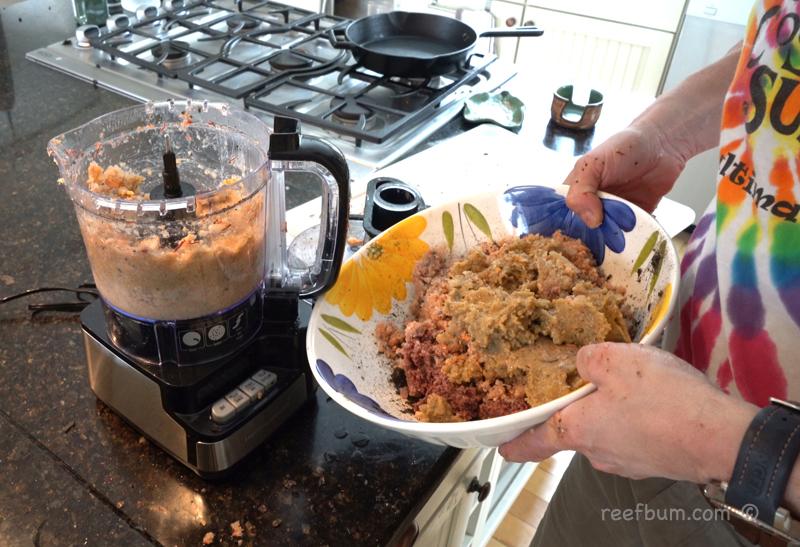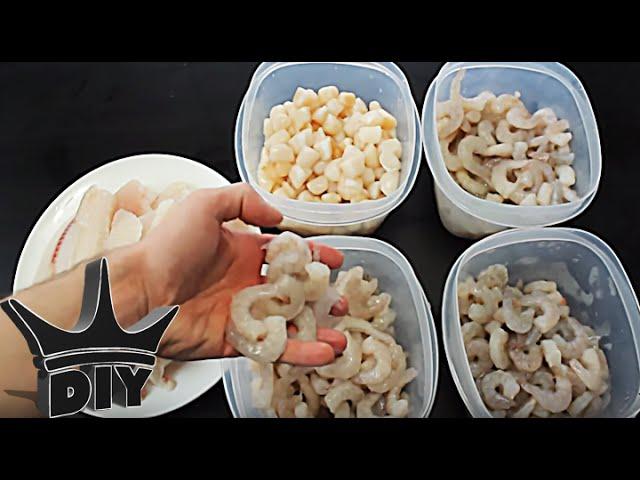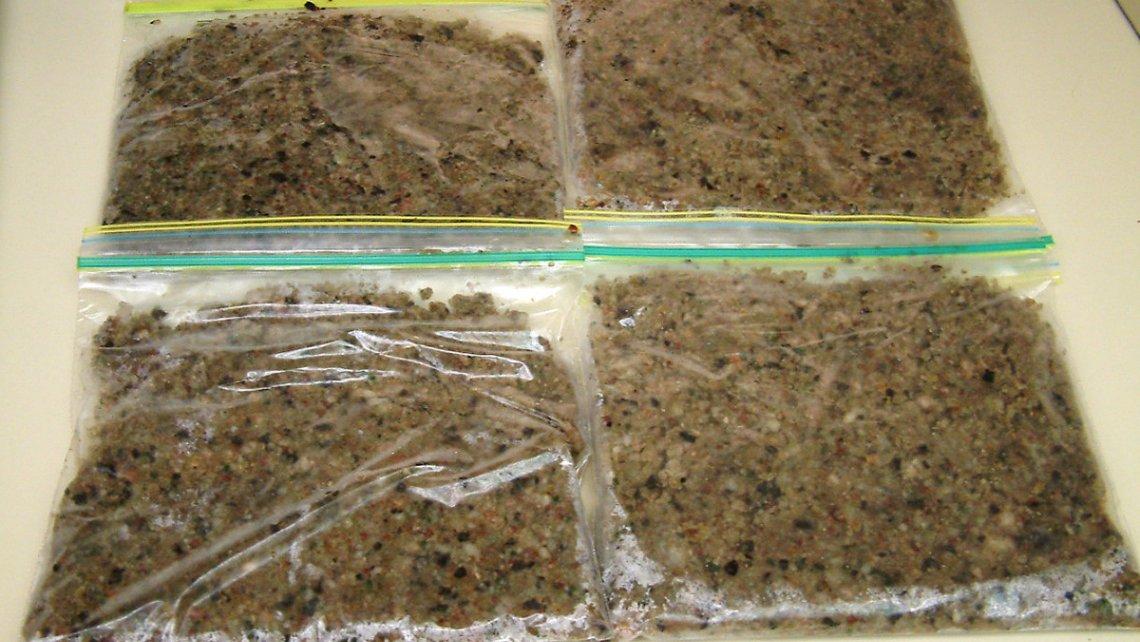Dry Marine Fish Food for ocean animals mixes proteins, veggies, and extras to copy their sea diet. It ensures balanced nutrition for saltwater aquarium fish.
Homemade dry fish food helps aquarium enthusiasts avoid additives and extra. This can help fish look better and stay healthier. It’s not good for the tank, but it’s also rewarding to take care of your fish in your way. As more people make their fish food, it’s crucial to understand what your fish needs to stay healthy and live.
Making fish food at home lets aquarium fans avoid additives and extra stuff. This not only helps marine life thrive but also gives satisfaction. With dry fish food becoming more popular, hobbyists should research. It follows the right dietary needs for their marine fish to keep them healthy and happy for longer.

Credit: www.reefbum.com
Benefits Of dry Marine Fish Food
Welcome to the ultimate guide on dry marine fish food. Making your own fish food isn’t only fun; it brings many benefits that boost the health of your aquarium fish. Let’s explore the advantages of taking the dry route for your marine fish food.
Nutritional Control
When you make fish food at home, you control the ingredients. You make sure your sea friends get the right mix of proteins, fats, vitamins, and minerals they need. This means healthier fish with vibrant colors and more energy. Here are some key points:
- Different fish species have specific diets.
- Adjust the proportions of nutrients to promote growth and vitality
- Avoid fillers and preservatives found in some commercial foods
Cost-effectiveness
Going dry with marine fish food can also be lighter on your wallet. Buying premium food brands regularly adds up. Making fish food yourself can reduce the cost. Here’s how you save:
- Bulk-buying ingredients can be cheaper than pre-made foods
- Maximizing ingredients in your kitchen reduces waste
- Storing food in large batches cuts down on shopping trips
Key Ingredients for Dry Marine Fish Food
Making food for marine fish at home is exciting and rewarding. It ensures the health of the fish and saves money. The key to success is choosing the right ingredients. Each type plays a critical role in fish nutrition. Know these essentials for a balanced diet.
Proteins Sources
Proteins are vital for growth and repairing tissues. Quality protein sources should dominate the food mix. Here are the top choices:
- Shrimp: A favorite, packed with essential amino acids.
- Squid: It’s nutritious and enticing for fish.
- Scallops: They offer a soft texture and rich proteins.
- Mussels: High in value, these strengthen your fish.
Vitamins And Minerals
| Vitamin | Source |
| Vitamin A | Carrots, Spinach |
| Vitamin C | Broccoli, Citrus Fruits |
| Calcium | Cuttlebone, Calcium Powder |
| Iodine | Seaweeds, Iodized Salt |
Carbohydrate Sources
Carbohydrates provide energy. They should be a small part of marine diets. Suitable picks are:
- Peas: Easy to digest, offering fiber.
- Rice: A tiny amount gives quick energy.
- Oats: They provide needed carbs.
Table of Contents
Recipes for Dry Marine Fish Food
Making your fish food ensures a healthy diet for your underwater pals. Homemade recipes let you control what goes in, keeping your fish healthy and colorful. Let’s get started on making dry fish food with these easy recipes! Frozen Fish Food Recipe
This frozen delight provides essential nutrients and mimics natural feeding behaviors. Follow the steps below to craft a batch:
- Blend seafood mix: Shrimp, scallops, and mussels are great options.
- Add greens: Spirulina, spinach, or seaweed for vitamins.
- Enrich with supplements: Add a multivitamin mix for extra nutrition.
- Pour into molds: Ice cube trays are great for controlling portions.
- Freeze: Your fish food will stay fresh and strong.
Gelatin-based Fish Food Recipe
Gelatin-based fish food mimics the texture of natural prey. It’s an excellent choice for picky eaters:
- Mix unsweetened gelatin powder with a little hot water.
- Mix mashed seafood with cut veggies.
- Stir in the gelatin solution to bind the ingredients.
- Spread the mixture onto a baking sheet to set in the fridge.
- Cut into small, bite-sized cubes for easy feeding.
Use within one month and observe your fish enjoy every bite!

Credit: m.youtube.com
Tips For Making dry Marine Fish Food
Ensure to add relevant keywords in your meta tags for SEO
Making dry fish food is fun and gives your fish nutritious meals. For best results, follow these tips to help your fish enjoy your homemade mixes.
Maintaining Hygiene
Keeping everything clean is crucial. Here’s how to maintain hygiene:
- Wash your hands before starting.
- Clean all utensils and surfaces with hot, soapy water.
- Use separate cutting boards for different ingredients.
- Disinfect tools after use.
- Keep food chilled until feeding.
Adjusting Recipes For Different Fish Species
Different species need different foods. Let’s learn how to adjust recipes:
| Fish Species | Protein Source | Supplement |
| Clownfish | Shrimp | Spirulina |
| Tangs | Plankton | Nori Seaweed |
| Angel Fish | Squid | Kelp Powder |
Test different combinations to see what your fish love. Note which recipes make your fish active and vibrant.
Storage And Preservation Of dry Marine Fish Food
dry marine fish food is great for aquarists who want to give their fish healthy meals.. Effective storage and preservation are crucial to maintain that quality over time. Let’s dive into the best ways to keep your homemade fish food fresh and potent.
Freezing Techniques
Freezing keeps your dry fish food nutritious. To achieve the best results, spread a thin layer of the food mix on a parchment-lined baking sheet. This ensures it freezes and prevents nutrient loss. After freezing, break the sheet into pieces and store in sealed containers or bags. These portions make feeding time convenient, reducing waste and keeping your tank clean.
Long-term Preservation
If you make lots of fish food, think about storing it long-term. Vacuum sealing is one effective approach. It removes air and seals the food, thus preventing freezer burn and extending shelf life. Another technique involves adding natural preservatives to the mix. Astaxanthin and vitamin C boost nutrition and keep the food fresh. Remember to label containers with the creation date to use the oldest ones first.
Remember that even with proper storage, homemade fish food still has a shelf life. Regular check for any signs of degradation or freezer burn. Use stored fish food within 3 to 6 months for best results.

Credit: www.melevsreef.com
Potential Risks Of dry Marine Fish Food
Making your own Dry Marine fish food is rewarding, but there are risks. Before you start, know these dangers to keep your pets healthy.
Nutritional Imbalance
Marine fish need a unique blend of vitamins, minerals, and proteins. Miss these and you risk the health of your fish. It’s easy to create an imbalanced diet with homemade food. This can lead to deficiencies or excesses harmful to fish.
- Too little calcium affects bone development.
- Excess phosphorus can inhibit calcium absorption.
- Vitamin imbalances harm fish metabolism.
Store-bought foods are designing for exact nutrition, which homemade versions might not match.
Contamination Risks
Making fish food at home can introduce unwanted contaminants. These might harm your marine environment. Kitchen tools used for preparing human food can have oils, spices, or cleaners on them. Even small traces can be toxic to fish.
| Contaminant | Potential Source | Effect on Fish |
| Soap Residue | Kitchen Utensils | Can damage fish gills and mucous membranes |
| Heavy Metals | Tap Water | May cause poisoning or long-term health issues |
| Bacteria | Raw Ingredients | Could lead to infections or disease |
Clean all gear well and choose ingredients with intelligence for safety.
Comparing dry Vs. Commercial Marine Fish Food
When caring for marine fish, aquarists consider homemade versus store-bought diets. Is dry fish food better? Or do commercial feeds lead the race in nourishing our aquatic friends? This part explores the good and bad of each, so you can choose with intelligence for your tank.
Quality Control
Crafting your own fish food puts you in the driver’s seat. You ensure the freshest ingredients and omit preservatives found in some commercial feeds. Yet, the challenge lies in maintaining consistent nutrient levels.
Customization Options
dry marine fish food excels in tailor-made nutrition. Feed your fish to match their diet needs for the best health and color. Store-bought foods give a balanced diet but fewer ingredient options. Individual fish quirks might require tweaking these off-the-shelf options.
Economic Comparison
| Dry Marine Fish Food | Commercial Marine Fish Food |
| Initial ingredient purchase might be high | Conveniently priced per package |
| Bulk preparation saves money over time | Regular purchases add up |
| Limited waste with controlled portions | Potential for overfeeding and waste |
Analyze both upfront costs and long-term investments. Dry methods save money but need good ingredients at first.. Commercial foods are a consistent expense, but you pay for the convenience of a pre-made mix.
Expert Recommendations For dry Marine Fish Food
Creating your own marine fish food can be rewarding and nutritious for your aquarium. It also allows you to tailor the diet to the specific needs of your marine life. Expert advice helps you make the perfect menu for your fish.
Consulting With Veterinarians
Before crafting fish food at home, it’s critical to seek guidance. Veterinarians specializing in fish health can provide invaluable advice. They make sure the ingredients and nutrients are right for your marine animals.
- Understand specific dietary needs for different fish species.
- Prevent nutritional deficiencies and imbalances.
- Identify allergies or sensitivities your marine creatures might have.
- Quality control and safety tips for dry food preparation.
Following Proven Recipes
| Ingredient | Benefit |
|---|---|
| Fresh seafood | Rich in protein and omega-3 fatty acids. |
| Spinach | Provides essential vitamins and minerals. |
| Spirulina | Boosts the immune system and enhances coloration. |
| Garlic | Acts as an appetite stimulant and anti-parasitic. |
Quality is critical when it comes to homemade fish food. Following proven recipes from reliable sources is essential. It ensures your fish get the right balance of proteins, fats, vitamins, and minerals. Stick close to the recipe amounts. Changes can affect the food’s nutritional value. Use recipes from trusted aquarist communities or published aquaculture nutritionists. They often include a variety of ingredients like seafood, vegetables, and supplements. This variety ensures a well-balanced diet for your marine animals
Frequently Asked Questions
What Can I Feed My Marine Fish?
Saltwater fish do best with different foods like frozen, pellets, and live options. It’s crucial to match your fish’s dietary needs to their natural eating habits.
How Can I Make My Own Fish Feed?
To make your own fish feed, mix protein sources like fish meal with grains, vitamins, and binders. Cook and shape the mixture into pellets. Adjust ingredients for nutritional balance suited to your fish species.
Can You Make Your Own Fish Food?
You can make fish food at home with recipes using seafood, veggies, and supplements for your fish. Homemade food lets you tailor their diet, which could be healthier.
Is It Cheaper To Make Your Own Fish Food?
Making your own fish food can be cheaper than buying because you control what goes in and how much.
What Is dry Marine Fish Food?
Dry fish food means homemade meals for saltwater fish. It made with seafood and healthy stuff.
Why Make Your Own Marine Fish Food?
Homemade fish food saves money, lets you customize for diet. It keeps ingredients fresh and good.
What Are The Benefits Of dry Fish Food?
Your homemade fish food gives custom nutrition, no preservatives. It can make your fish healthier and more colorful.
How Do You Prepare dry Marine Fish Food?
Make dry fish food by blending seafood, veggies, vitamins, and binders until it’s easy for fish to eat.
Conclusion
Crafting your own marine fish food blends is a rewarding try. Tailoring nutrition to your aquatic pets enhances their health and color vibrancy. With the right ingredients and a bit of patience, you can create a feast fit for your underwater kingdom.
Dive into dry and watch your fish thrive.








Leave a Reply